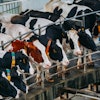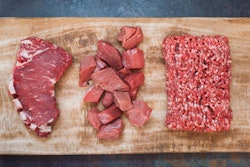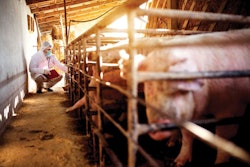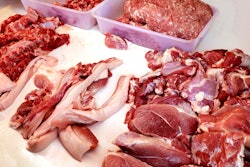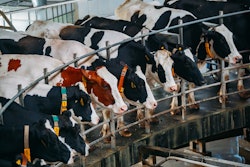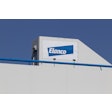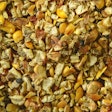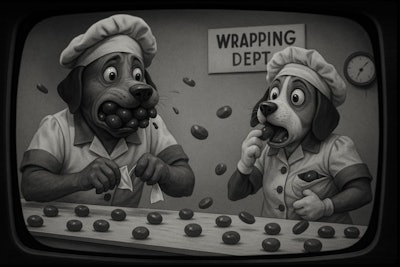
Pet food manufacturers often focus on major equipment purchases like extruders, dryers and packaging while overlooking a critical component: the conveyor systems that link the entire production line together. According to Marco Pardo, senior product manager for conveyance solutions at Columbus McKinnon, this oversight can lead to budget shortfalls, compatibility issues and compromised sanitation standards.
"A lot of times, what we see is that the conveyors are forgotten especially in large projects," Pardo said during a recent Ask the Pet Food Pro. "People are worried about long lead time items — case packers, fillers, ovens — but they forget that conveyors still need to link those machines and processes."
Hygiene challenges in human-grade pet food
As pet food moves increasingly toward human-grade standards, pathogen control becomes paramount. Conveyors, which handle raw ingredients throughout processing, present potential risks for cross-contamination and bacterial growth if not properly designed for sanitation.
"Every nook and cranny could harbor bacteria," Pardo explained. A subsidiary of Columbus McKinnon, Dorner's Aqua Proof Ultimate product line carries 3-A certification, making it one of the only conveyor manufacturers with this designation, said Pardo. The certification demonstrates compliance with strict sanitary standards through features like polished stainless-steel in food zones, specialized welding techniques and the elimination of threaded fasteners where food contact occurs.
The design philosophy extends to drainage and accessibility. "We minimize horizontal surfaces because we want the water to drain off and the equipment to be dry," Pardo said. The company also applies minimum radius requirements to every corner to avoid sharp edges where bacteria can accumulate.
Easy-clean features reduce downtime
Sanitation procedures typically require disassembling conveyors and removing belts for cleaning, which can create significant production downtime. Pardo identified two critical features that streamline this process: belt lifters and tip-up tails.
"The idler end tips up, allowing slack on the belt," he explained. "Combined with belt lifters along the conveyor, the belt is now elevated above the frame, allowing you to spray the interior without necessarily taking the belt off."
Dorner's tool-free design philosophy enables rapid disassembly and reassembly. Components fit together without requiring instructions or specialized tools, and motor coupling systems allow quick removal before washing. These features significantly reduce the time and water consumption required for sanitation.
Belt technology itself continues advancing, particularly for high-moisture applications. "We like the thermo-drive type belts, especially for wet food with high water content, because those belts don't absorb water and really limit bacteria growth," Pardo said.
Selecting conveyors for product integrity
Beyond sanitation, conveyors must handle increasingly complex product shapes without damage. As pet food manufacturers produce intricately shaped kibble and delicate treats, transfer points become critical.
"Gentle transfers and accurate transfers become critical," Pardo noted. "As speeds go up, it becomes harder and harder to do." For flat products requiring consistent orientation, a nose bar, which is a small pulley, can maintain product position during transfer. This accuracy proves especially important when integrating with robotic systems that depend on consistent product presentation, added Pardo.
Belt selection varies based on application requirements. While some belts carry sanitary certifications, manufacturers must consider whether modular belts, which enable turns but create potential harboring points, fit their needs. "If you have nooks and crannies in the belt that allow you to make a turn, that also means there's places food can get in," Pardo said.
Planning for automation and scalability
Conveyor systems form the foundation of production line automation. "The conveyor is the artery of the factory, linking different processes and machines," Pardo said. "That's really the first step in automation most of the time — implementing a conveyor so material handling becomes that first step."
During planning stages, manufacturers should consider expansion scenarios. Questions about future capacity needs, additional equipment and plant layout changes should inform initial conveyor specifications. "Today, I might have a cart; tomorrow I might have a conveyor," Pardo said. "Today I might have two packers and one filler; tomorrow I might have double that."
One important planning consideration involves accumulation systems between machines operating at different speeds. "Machines have different speeds, and sometimes you need to accumulate product between them," Pardo explained. Without proper accumulation, a stoppage at one machine, such as refilling cartons into a case packer, can shut down upstream processes like fillers.
Retrofitting legacy equipment
For manufacturers working with existing lines, retrofitting presents unique challenges. "The only warning about retrofitting is that you don't want the retrofit to just be a band aid," Pardo cautioned. "If it is a band aid, make sure that has a time allocated to it, because you don't want a band aid to become a problem later on."
Compatibility issues span software, programmable logic controllers, electronics and data transfer systems. Physical constraints of existing equipment can complicate integration, and significant production downtime must be scheduled for installation and testing.
Despite these challenges, retrofits can deliver meaningful improvements. Pardo described one project where Dorner built a modular conveyor system on casters with standardized components. This allowed the facility to reconfigure production lines daily based on recipe requirements, using three or four conveyors in different arrangements. "That brought some efficiencies to their facility and more flexibility to meet the market," he said.
Predictive maintenance and efficiency
Today's conveyor systems increasingly incorporate predictive maintenance capabilities through sensor integration and data logging. "For you to have predictive maintenance, you have to start with the data," Pardo said. Sensors can monitor vibration, motor health and belt tension, providing early warning of potential failures.
"It allows you to predict and understand that something is running a little bit different than before," he explained. "You can investigate and schedule downtime before it becomes a catastrophic maintenance issue where you have to shut down the line for hours."
Beyond preventing failures, newer equipment delivers efficiency gains. More efficient motors reduce energy consumption per unit produced, and automated systems standardize manufacturing processes while reducing human error and waste. Equipment designed for rapid cleaning reduces water consumption and downtime, delivering both economic and sustainability benefits.
As pet food manufacturing continues evolving toward higher standards and greater automation, the importance of well-designed, properly maintained conveyor systems only increases. By planning thoroughly, selecting appropriate technology and partnering with experienced suppliers, pet food manufacturers can avoid the common pitfall of treating conveyors as an afterthought in production line design.
To see upcoming Ask the Petfood Pro sessions or review previous chats, visit petfoodforumevents.com.

